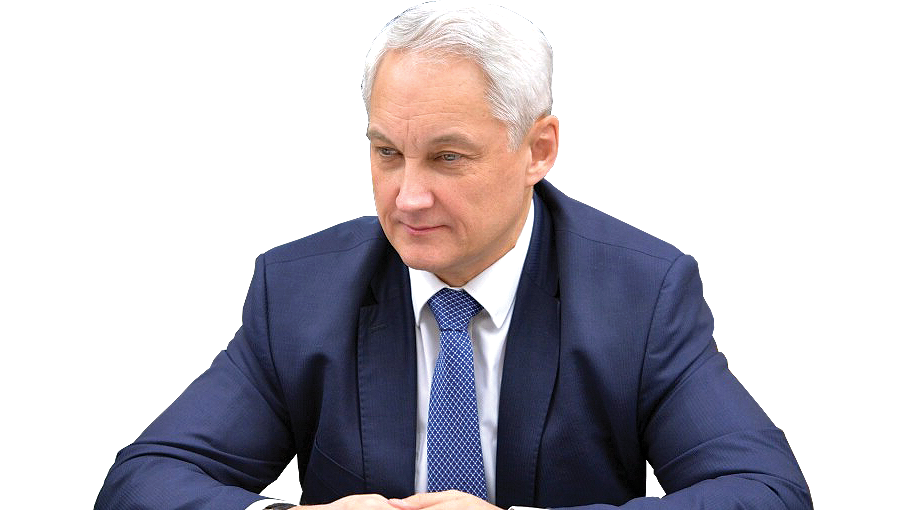A railroad connecting Rasht and Astara in Iran, which should become part of the International North-South Transportation Corridor, will be built by the end of 2027, Russian First Deputy Prime Minister Andrei Belousov told journalists on the sidelines of the Russia-Islamic World Kazan Forum.
"In line with our agreement, the construction should take four years. Designing and geological prospecting are already underway. We plan that all work should be completed in Q3 2027 or by the end of 2027," Belousov said when asked how long the construction would take.
Speaking of the development of the Trans-Caspian section of the North-South ITC, Belousov said active work is currently underway to launch this route.
The Caspian Sea's coastal zone is shallow, and in order for vessels with a draft of four meters to enter there, dredging works began earlier this year to build a special canal.
"All of this is moving ahead quite successfully and we assume that the volume of transportation along this route would reach 10 million tons by 2030," he was quoted as saying by Interfax.
"We plan to bring the North-South transportation capacity to 41-45 million tons by 2030, which is three times as much as now. We're currently transporting about 15 million tons along the three routes [Eastern, Central and Trans-Caspian]," he said.
As reported earlier, Russia and Iran on Wednesday signed an agreement to jointly finance the design, construction and delivery of goods and services for building the Rasht-Astara railroad in Iran. The document was signed online with the participation of Iranian President Ebrahim Raisi and Russian President Vladimir Putin.
It was also reported that Russia would issue a 1.3 billion inter-state loan to finance the construction. The overall cost of the project has been estimated at €1.6 billion.
Entire Region to Benefit: Raisi
The North-South corridor will benefit the entire region. From East and South Asia to Caucasia and North Europe, the route is a manifestation of friendship, convergence and economic partnership among all countries long the way more than before,” Iranian President Ebrahim Raisi was quoted as saying by IRNA at the Wednesday ceremony in Tehran.
He added that initial negotiations to complete the corridor dates back two decades and that intense diplomacy during his presidency has accelerated work on the project.
Russian President Vladimir Putin stressed the importance of the agreement and said the Rasht-Astara railroad will give us an opportunity to transform and diversify global transportation routes, adding that it will create competition to boost transit capacities in the region.
According to Putin, the North-South corridor plays a vital role in meeting the food security of Iran and littoral states of the Persian Gulf.
The missing link is a 162-kilometer railroad between the city of Rasht, the capital city of Gilan Province, and the city of Astara in the same province on the border with Azerbaijan.
With the completion of this section, trains can travel from St. Petersburg to Persian Gulf.
The Astara–Rasht–Qazvin railroad, which will wind along the southwestern corner of the Caspian Sea, forms a central link of the longer INSTC, a multimodal route linking India, Iran, Azerbaijan, Russia and Europe.
The cross-border Astara (Iran)–Astara (Azerbaijan) section of the railroad was officially inaugurated on March 29, 2018, while the Rasht–Qazvin section inside Iran was implemented on March 6, 2019. Therefore, the only remaining gap is the 164-kilometer rail section from Rasht to Astara. Until this railroad segment is completed, freight moving by train must be transferred to trucks and then back again.
Sustainable Transit Revenue
The corridor has enormous potential to create sustainable revenues, which can rival our oil exports, Mohammad Jamshidi, vice president for political affairs, was quoted as saying on Tuesday.
According to Deputy Roads Minister Kheirollah Khademi, the project will take off with €1.5 billion of Russian funding.
Echoing Jamshidi’s remarks about the project, Khademi said, “Its completion can bring in enormous revenues by increasing the volume of goods transited through Iran. The route can attract the lion’s share of the cargo transported between Russia and India or East Europe and India.”
The deputy minister referred to the passage of Rasht-Astara railroad through farms along 50% of the route as a significant hurdle to the project’s completion.
“We need to purchase these farms and after that, construct bridges to preserve the nature. So far, we have designed bridges along 52 kilometers of the route,” he said.
Kazem Jalali, Iran’s ambassador to Russia, earlier said construction work is expected to begin soon.
“The project will be transferred to an operational, practical level. I think that within three to four months, maximum until October, the executive part of implementing the project of the North-South Transport Corridor will begin," Jalali said at the Caucasus Region Investment Exhibition.
In March, Sergey Pavlov, the first deputy head of Russian Railways, also told reporters that the Russian Ministry of Transport was preparing two intergovernmental agreements: Iran-Russia and trilateral Azerbaijan-Russia-Iran.
There are plans to build both narrow and wide-gauge tracks in this section.
"There were negotiations, including at the highest level, and a decision was made to build a section of the Rasht-Astara line on a combined gauge. That is, they plan to lay both 1435 mm rails, the current standard in Iran, and 1520 mm rails, the Russian gauge. But first, 1435 mm rails will be laid in order to use the existing infrastructure and move as quickly as possible," he said.
The main obstacle in the way of the project to date has been financing, particularly due to the US sanctions on Iran.
According to an earlier agreement between Iran and the Republic of Azerbaijan, both sides pledged to provide $500 million each to build the Rasht–Astara railroad. And in 2016, the International Bank of Azerbaijan signed a deal with Iran on the allocation of a $500 million loan for this purpose. However, this agreement was not implemented due to the comprehensive US sanctions on Iran’s banking network.


